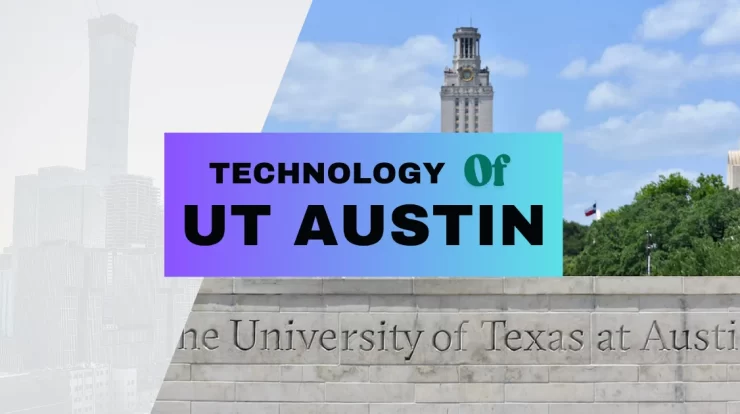
In the face of escalating global warming and mounting ecological threats, the University of British Columbia (UBC) has emerged as a scientific and strategic leader in addressing climate challenges, particularly those affecting the Pacific Rim. With its unique geographical positioning, cross-disciplinary expertise, and commitment to sustainability, UBC is developing innovative solutions that could reshape how societies understand, adapt to, and mitigate the effects of climate change.
Contents
The Pacific Rim Climate Crisis
One of the most climate-sensitive areas in the world is the Pacific Rim. With its long beaches, rich marine life, and crowded towns, it is becoming more and more at risk from rising sea levels, stronger storms, warmer oceans, and changing patterns of rainfall. Countries around the Pacific, from Canada and the US to Japan, Indonesia, and Chile, are facing similar environmental threats, but many of them don’t have answers that are adapted to their needs and can be used by many people.
The coastal towns and cities of British Columbia have their problems, such as saltwater intrusion, erosion, dwindling fish stocks, and damage to forests. These situations call for immediate research and response that is specific to each region. University of British Columbia, which is on the border of the Pacific, knows this is important and is using its scientific power to help the area and the world become more climate resilient.

University of British Columbia’s Climate Action Strategy
UBC’s approach to climate leadership goes far beyond just research labs. It has made sustainability a part of its institutional strategy. UBC was the first Canadian university to declare a climate emergency and publish a complete Climate Action Plan 2030 in 2021. This plan has big targets for lowering campus emissions, building clean energy infrastructure, and including climate justice in education.
One of UBC’s most ambitious goals is to have no operational emissions by 2035, which is 15 years before Canada’s national goal. The campus is like a living lab where sustainable technologies like district energy systems, electric car integration, and buildings that don’t waste anything are tested.
Key Research Initiatives and Labs
Several specialty institutions and labs at UBC work together to study climate change, focusing on decarbonisation, environmental resilience, and sustainable development. The Pacific Institute for Climate Solutions (PICS) is one of the most well-known. It is a partnership between UBC and other significant institutions in British Columbia. PICS works on finding solutions to climate problems in the western Pacific that are founded on facts. These problems include wildfires, ocean acidification, and clean transportation systems.
The UBC Climate Hub is a student-led and faculty-supported project that works with PICS to encourage study, discussion, and action on climate justice. The Clean Energy Research Centre (CERC), on the other hand, looks at novel ways to cut greenhouse gas emissions using renewable energy, hydrogen fuel technology, and cutting-edge battery systems.
The Institute for Resources, Environment, and Sustainability (IRES) is also at UBC. It blends social science and policy research with ecological studies to create climate-smart policies and tools for communities in the Pacific and beyond.

Innovations in Ocean and Coastal Science
Ocean science is one of UBC’s most important areas of climate study. The UBC Institute for the Oceans and Fisheries (IOF) is a world leader in studying marine ecosystems and how climate change affects fisheries and biodiversity. Researchers at IOF utilise satellite monitoring, AI models, and experiments in the field to examine how the ocean is getting warmer, more acidic, and how marine food webs are changing.
The Sea Around Us Project is one example of this work. It collects and evaluates data from around the world on marine fisheries to assist governments and NGOs in making wise choices about protecting the ocean and making sure there is enough food. The Pacific island nations and coastal communities that depend on fishing for their economies will find these insights very useful.
Researchers at UBC are also coming up with new ideas for coastal infrastructure that combine engineering and ecology, such as living shorelines and green seawalls. These new ideas help both restore habitats and make them more resistant to climate change. This is a critical double advantage in the face of rising seas and habitat loss.
Indigenous Knowledge and Community Engagement
A key aspect of UBC’s climate research is its focus on working with and including Indigenous people. The institution sits on land that the Musqueam people have always lived on and never relinquished. It works with First Nations all around British Columbia.
The Centre for Indigenous Land-Based Education and Research at UBC works with Indigenous researchers, elders, and communities on climate projects that use knowledge passed down through generations on how to care for the environment. These partnerships help bring back old ways of managing land, restore forests and salmon habitats, and come up with climate plans that are based on cultural resilience.
Real-World Impact and Global Collaboration
The work of UBC has effects that go beyond the classroom and into the real world. It helps make policy suggestions, helps communities plan for changes, and helps shape international climate talks. UBC researchers assist in making laws and infrastructure investments in real time by working with the City of Vancouver, the provincial government of British Columbia, and global NGOs like The Nature Conservancy.
The University of British Columbia is also one of the founding members of the University Climate Change Coalition (UC3), which is a network of top academic institutions in North America that works to speed up climate action in their communities and around the world.
Student Involvement and Future Leaders
Not just the teachers, but also the students, are working towards the university’s climate purpose. Students at UBC aren’t just studying climate change; they’re also doing something about it. The UBC Sustainability Scholars Program puts graduate students in touch with businesses and cities to work on real-world environmental problems.

Undergraduate researchers, on the other hand, work in labs looking into solar energy, climate modelling, and environmental policy. The Climate Venture Studio gives money and advice to student entrepreneurs who want to turn their green ideas into real businesses. These ideas might be anything from low-carbon building materials to AI-powered energy management systems.
UBC also has degree programs and certificates that are specifically created to prepare the future generation of climate scientists, engineers, and policy specialists. Students learn how to lead in both the public and private sectors by taking classes in climate economics, environmental legislation, Indigenous governance, and sustainable design.
Conclusion
As the global climate issue gets worse, UBC stands out as a paradigm for how colleges and universities can come up with bold and helpful answers, especially in places like the Pacific Rim that are very vulnerable and complicated. University of British Columbia (UBC) is helping to find a sustainable way forward by integrating scientific rigour with local relevance, community involvement, and a global point of view. Its groundbreaking work in ocean science, renewable energy, working with Indigenous people, and coming up with new policies shows a simple but strong concept, which is that actual change starts when knowledge is put to use where it counts most.
In the years to come, UBC’s impact will probably grow, both as a centre for Pacific-focused innovation and as a global symbol of hope and action in the age of climate change.





